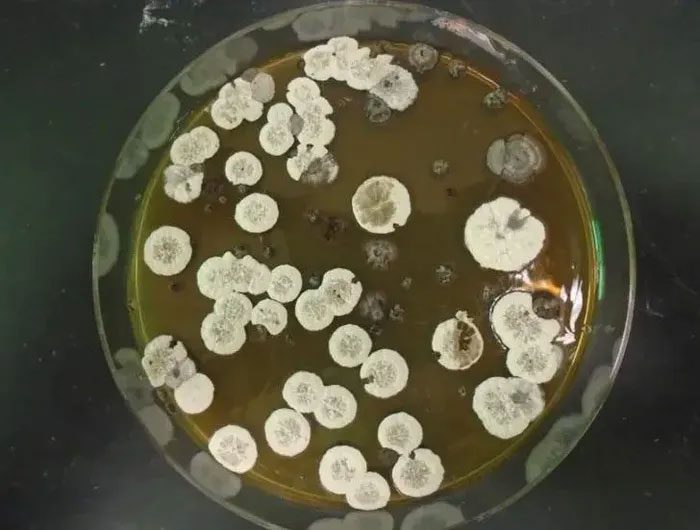A team of researchers at the Lawrence Berkeley National Laboratory has successfully harvested alternative jet fuel from common soil bacteria belonging to the genus Streptomyces. This is exciting news that reveals a promising alternative solution for aviation fuel.
Depleting Oil Reserves and the Need for Renewable Energy Sources
In 1999, the American Petroleum Institute (API) published a report indicating that the Earth’s oil reserves could run dry anytime between 2062 and 2094. However, a 2019 study from the Millennium Alliance for Humanity and the Biosphere (MAHB) at Stanford University predicted that the world would deplete its oil reserves much sooner, specifically by 2054. Imagine a world where airplanes don’t fly, jets don’t protect national borders, goods aren’t transported, and rockets can’t leave Earth due to a lack of oil.
With global aviation, maritime, and aerospace industries running on oil, its depletion could lead to chaos worldwide. Recent shortages have caused fuel prices to soar to unprecedented levels globally. Recently, gasoline prices in various states across the U.S. have surpassed $5 per gallon, reaching an all-time high.
This is why many industries and scientists are continually seeking renewable energy sources that can replace fossil fuels, particularly oil. A significant step in this direction has been taken by scientists at the Lawrence Laboratory, who are producing renewable jet fuel from bacteria.
How Is Jet Fuel Produced from Streptomyces Bacteria?
Jay Keasling, a professor of chemical engineering at the University of California, along with researcher Pablo Cruz Morales, discussed the possibility of creating a molecule named Jawsamycin. Pablo had previously worked with Streptomyces bacteria, so he knew that Jawsamycin is a naturally produced molecule generated through metabolic reactions in the bodies of Streptomyces bacteria.

Streptomyces bacteria forming fuelimycin molecules.
This molecule has the potential to release a tremendous amount of energy, and “it will be a groundbreaking idea.” His team set out to realize this concept. They designed Streptomyces coelicolor bacteria in a culture medium with sugar, salt, and some amino acids, then harvested the bacteria, broke them down, and extracted the oil (containing molecules similar to Jawsamycin) produced in their bodies. Ultimately, they decided to esterify the oils, resulting in a new type of biofuel ready for use.
The synthetic molecules produced in the lab that function similarly to Jawsamycin are referred to by Pablo and his colleagues as “fuelimycin”. Discussing the pros and cons of biofuels compared to conventional fuels, Pablo stated that their fuel is produced through renewable processes, whereas traditional fuels are derived from petroleum. POP-FAME can also store more energy, making them potentially more efficient if produced on a large scale.
However, the current disadvantage is that there is still no economically viable large-scale production method, making it challenging to compete with fossil fuels, which are subsidized and have an economy built around them. Nevertheless, scientists hope for a shift, as the climate is changing, and humanity needs to stop using fossil fuels to slow this process.
The Powerful Chemical Properties of the Molecule from Bacteria
Jawsamycin is a natural molecule created in the bodies of Streptomyces bacteria when they consume sugars or amino acids and then convert them into molecules that form cyclopropane rings (triangular three-carbon structures) during digestion. According to researchers, the formation process of Jawsamycin is similar to the creation of fats in the human body; however, the high-energy cyclopropane rings make the difference.

Biofuel from Streptomyces could even power rockets in the future.
Fats are formed by the accumulation of glucose (a six-carbon molecule) in the body in the form of glycogen. Compared to the six carbon molecules, the triangular three-carbon molecule requires more energy to form. Chemically, if there are bonds at a normal angle, an open carbon chain can be flexible and comfortable. However, if you turn them into a six-carbon ring, they can still move a little. Yet, the triangular shape causes the bonds to bend, and that tension requires energy to create.
The construction of the Jawsamycin and fuelimycin molecules is facilitated by an enzyme known as polyketide synthases. Polyketide synthases are multi-enzyme complexes similar to fatty acid syntheses that produce oil compounds in the human body and many other organisms. Researchers have also recognized that the activity of polyketide synthases forms high-energy cyclopropane rings.
They believe that their biofuel could power jets, commercial aircraft, and even rocket fuel in the future, but much work remains to make this feasible. The research team stated that the next steps are to make the bacteria produce more of this product and further modify the product for use in various applications such as transportation, rockets, and aviation.


















































